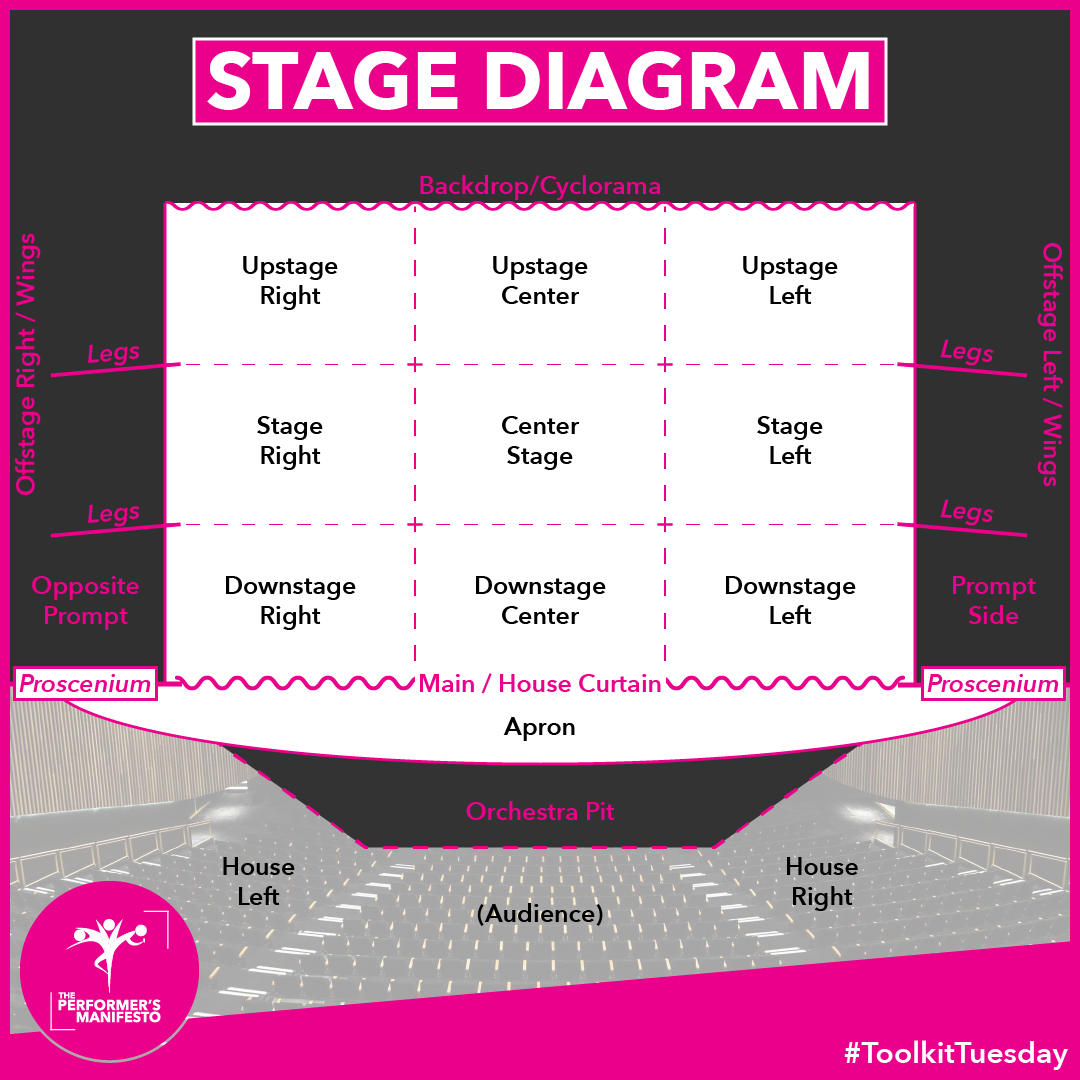Welcome to another #ToolkitTuesday, where we arm you with tools and strategies that can elevate your career to the next level. This week, we’re diving into the magical world of the stage, but not just any stage—your stage. Whether you’re a theatre newbie or a seasoned pro, understanding universal stage terms is crucial for effective communication and jaw-dropping performances. Let’s get started!
The Stage Diagram
Imagine a bird’s-eye view of a stage. Normally, you’d see sections like centre stage, upstage, downstage, stage left, and stage right. But what do all these terms really mean? Let’s break it down.
Actor’s Perspective
- Stage Right / Stage Left: These terms refer to the sides of the stage from the actor’s viewpoint, facing the audience. ‘Stage Right’ is the actor’s right, and ‘Stage Left’ is the actor’s left. Simple as that!
- Upstage / Downstage:
- Upstage: The area furthest from the audience.
- Downstage: The area closest to the audience.
- Apron: This is the part of the stage that extends past the proscenium arch, closer to the audience.
- Prompt Side / Opposite Prompt:
- Prompt Side (PS): Stage left, where the stage manager or prompter may be located during a performance.
- Opposite Prompt (OP): Stage right, the opposite of the prompt side.
- Offstage / Wings:
- Offstage: The areas on either side of the stage hidden from the audience.
- Wings: The sides of the stage where actors await their entrances, and stage techs may handle props or scenery.
- Legs: Curtains on the sides of the stage that mask the wings.
Front of House (Audience Perspective)
- Main/House Curtain: The main curtain separating the stage from the audience.
- Proscenium: The “frame” of the stage as seen by the audience.
- Orchestra Pit: The area between the stage and the audience where the orchestra plays.
- House Left / House Right: From the audience’s perspective, ‘House Left’ is their left, and ‘House Right’ is their right.
- Backdrop / Cyclorama:
- Backdrop: A flat surface painted and positioned at the back of the stage.
- Cyclorama: A large curtain or wall, often concave, at the back of the stage.
Quick Tips
- Always Act with Intention: Knowing your stage directions helps you move purposefully and convey your character’s intentions seamlessly.
- Communication is Key: Understanding these terms makes it easier to collaborate with directors, stage managers, and fellow actors.
- Be Disciplined: Make it a habit to familiarise yourself with each new stage setup. It’s part of your toolkit, after all!
So, there you have it! A quick guide to understanding universal stage locations and terms. Remember, excellence lies in the details. Use this guide to enhance your stagecraft.
Keep shining, keep striving, and never stop being your fabulous selves!


